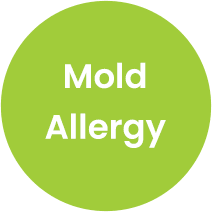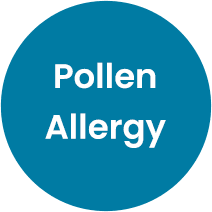Types of Allergies
Types of Allergies
An allergy occurs when your body’s immune system sees a certain substance as harmful. It reacts by causing an allergic reaction. Substances that cause allergic reactions are allergens.
There are many types of allergies. Some allergies are seasonal and others are year-round. Some allergies may be life-long. It is important to work with your health care provider to create a plan to manage your allergy. Avoiding your allergens is the best way to prevent an allergic reaction.
True allergies to drugs (medicines) occur in only a small number of people. Most drug reactions are not allergic, but are side effects of the properties of the medicine. A diagnosis of the cause of the drug reaction is usually based only upon the patient’s history and symptoms. Sometimes skin testing for drug allergy is also done.
 There are different types of allergic reactions to foods. There are differences between IgE-mediated allergies, non-IgE mediated allergies and food intolerances.
There are different types of allergic reactions to foods. There are differences between IgE-mediated allergies, non-IgE mediated allergies and food intolerances.
 Bees, wasps, hornets, yellow jackets and fire ants are the most common stinging insects that cause an allergic reaction.
Bees, wasps, hornets, yellow jackets and fire ants are the most common stinging insects that cause an allergic reaction.
Non-stinging insects can also cause allergic reactions. The most common are cockroaches and the insect-like dust mite. Allergies to these two insects may be the most common cause of year-round allergy and asthma.
 A latex allergy is an allergic reaction to natural rubber latex. Natural rubber latex gloves, balloons, condoms and other natural rubber products contain latex. An allergy to latex can be a serious health risk.
A latex allergy is an allergic reaction to natural rubber latex. Natural rubber latex gloves, balloons, condoms and other natural rubber products contain latex. An allergy to latex can be a serious health risk.
 Mold and mildew are fungi. Since fungi grow in so many places, both indoors and outdoors, allergic reactions to mold can occur year round.
Mold and mildew are fungi. Since fungi grow in so many places, both indoors and outdoors, allergic reactions to mold can occur year round.
 Allergies to pets with fur are common. It is important to know that an allergy-free (hypoallergenic) breed of dog or cat does not exist.
Allergies to pets with fur are common. It is important to know that an allergy-free (hypoallergenic) breed of dog or cat does not exist.
 Pollen is one of the most common triggers of seasonal allergies. Many people know pollen allergy as “hay fever,” but experts usually refer to it as “seasonal allergic rhinitis.”
Pollen is one of the most common triggers of seasonal allergies. Many people know pollen allergy as “hay fever,” but experts usually refer to it as “seasonal allergic rhinitis.”
Medical Review: October 2015














